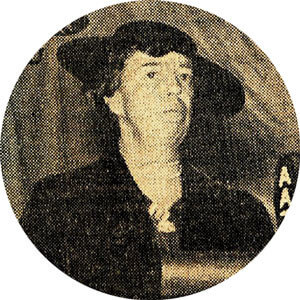- February 06, 2014
- By Terp Staff
Q: I’ve passed this spot in front of Montgomery Hall many times, and I was wondering, what is it? Or, what was its original purpose?—Jim Baxter
A: Today, it’s known primarily as an “echo spot.” Orientation groups often stop there, and if you stand in just the right spot in the middle of it, you can hear your own echo. Originally, it was the base for a proposed statue of Charles Benedict Calvert, founder of the Maryland Agricultural College, UMD’s predecessor. The base was built in the early 1970s before objections were raised about having a statue of a slaveholder on campus, which stopped the process and left just the “echo spot” today. It’s unclear whether the statue was actually created and not erected, or if it was never created.
 Q: Is it true that Eleanor Roosevelt visited the university twice?—Nancy Chow ’09
Q: Is it true that Eleanor Roosevelt visited the university twice?—Nancy Chow ’09
A: Yes, though under very different circumstances. In 1938, she became the first first lady to visit campus, when she addressed a crowd of 6,000 students at Ritchie Coliseum, speaking about education, civic responsibility and community engagement. Her second visit, during World War II, was a surprise. The United Nations had set up its Relief and Rehabilitation Administration on campus to train relief workers, and in 1944, Roosevelt unexpectedly dropped in on a Serbo-Croatian language class at the Rossborough Inn.
 Q: World War I began a century ago this year. How did it affect the university?—Ethan Downing
Q: World War I began a century ago this year. How did it affect the university?—Ethan Downing
A: Since the U.S. was in the war only from April 6, 1917, to Nov. 11, 1918, the actual impact on what was then called the Maryland State College of Agriculture was limited. Records show that of the nearly 200 men and women enrolled during this period, 64 students enlisted. In 1918, UMD created the Student Army Training Corps as an emergency measure (supplanting the ROTC) and trained 600 men as officers. In addition, the college served as a training ground for more than 250 members of the U.S. Signal Corps, who learned codes, radio operation and repair, and physics of the wireless—some even took carrier pigeon training!
 Questions may be emailed to Terp magazine or tweeted to @UMDarchives
Questions may be emailed to Terp magazine or tweeted to @UMDarchives
University of Maryland University Archives: online| blog| facebook
